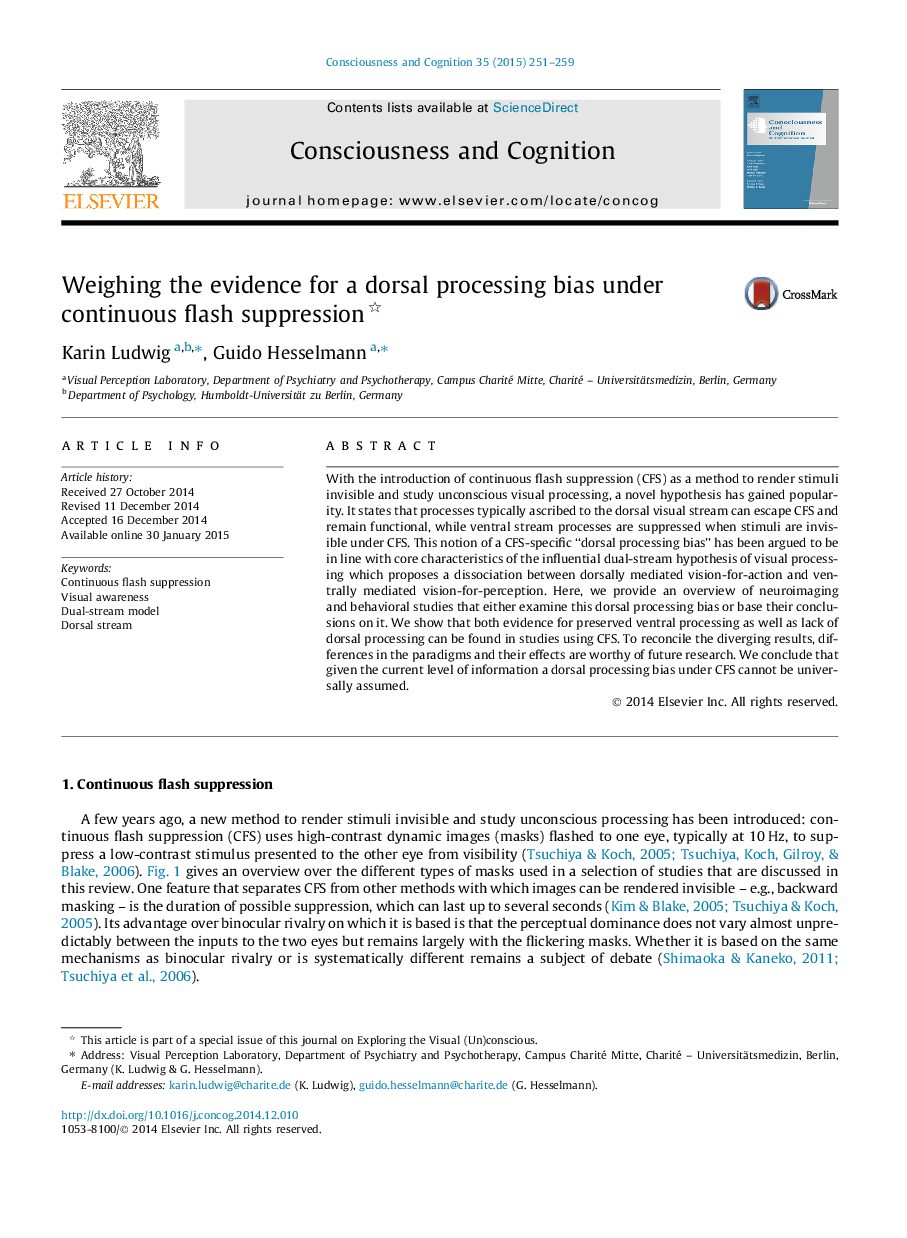| Article ID | Journal | Published Year | Pages | File Type |
|---|---|---|---|---|
| 7289182 | Consciousness and Cognition | 2015 | 9 Pages |
Abstract
With the introduction of continuous flash suppression (CFS) as a method to render stimuli invisible and study unconscious visual processing, a novel hypothesis has gained popularity. It states that processes typically ascribed to the dorsal visual stream can escape CFS and remain functional, while ventral stream processes are suppressed when stimuli are invisible under CFS. This notion of a CFS-specific “dorsal processing bias” has been argued to be in line with core characteristics of the influential dual-stream hypothesis of visual processing which proposes a dissociation between dorsally mediated vision-for-action and ventrally mediated vision-for-perception. Here, we provide an overview of neuroimaging and behavioral studies that either examine this dorsal processing bias or base their conclusions on it. We show that both evidence for preserved ventral processing as well as lack of dorsal processing can be found in studies using CFS. To reconcile the diverging results, differences in the paradigms and their effects are worthy of future research. We conclude that given the current level of information a dorsal processing bias under CFS cannot be universally assumed.
Related Topics
Life Sciences
Neuroscience
Cognitive Neuroscience
Authors
Karin Ludwig, Guido Hesselmann,
